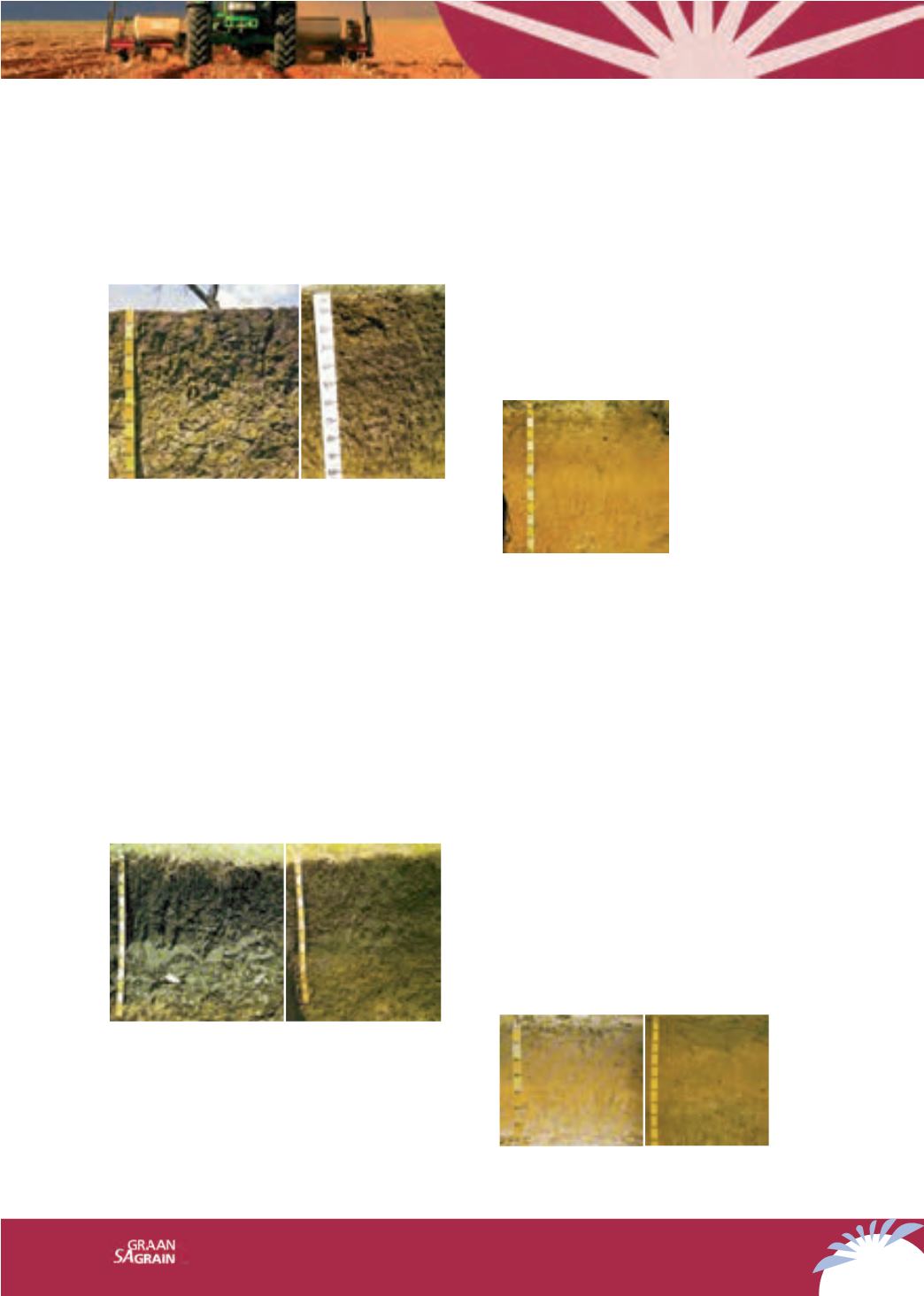

49
GRAANGIDS
2017
GRAIN GUIDE
and Tukulu soils, which are regarded as
marginal for crop farming due to the lower
infiltration ability, higher run-off and high
evaporation losses.
These soils are mainly used to plant sunflower
and grain sorghum, and mulch tillage with
winged tine implements provides good results.
Primary tillage of 200 mm or shallower with a
chisel plough is mostly adequate.
Soils with more than 25% clay in
the topsoil
This group, comprising vertic or melanic soils,
mainly has a dark colour and an organic
carbon content that varies between 0,5% and
4%, with a well-developed structure in the
topsoil. Soil types include (but are not limited
to) the Arcadia, Rensburg, Bonheim and
Inhoek soil structures.
These soils are quite resistant to wind and
water erosion and are excellently suited to no-
till practices. However, these soils are regarded
as marginal for dryland crop farming in the
long term.
Summer rainfall of between 550 mm and
700 mm per year
Red and yellow well-drained sandy soils
with less than 20% clay in the topsoil
The main soil types in this group include
the Hutton, Clovelly and Avalon soils and
are suitable for growing most crops. Soil
acidification is the biggest problem with
these soils and regular liming is essential.
Both conventional and mulch tillage practices
are recommended for these soils. When
mulch tillage is used in sandy soils with less
than 10% clay in the topsoil, a deep ripper
action combined with controlled track traffic is
recommended. Crop rotation is also essential
to retain the biological soil quality.
Yellow and grey soils with plinthic
and gley subsoils
The soils in this group (e.g. the Westleigh,
Pinedene, Longlands and Kroonstad soils) are
characterised by wet subsoil during periods
of high rainfall. In dry years they can deliver
good crops, while they tend to become
waterlogged during wet periods. The wet soil
conditions make it difficult to control weeds,
while self-sowing and soil acidification are also
a significant problem.
Valsrivier and Sepane
Arcadia and Rensburg
Westleigh and Pinedene
Avalon
Continued on p. 50
Tillage of soils in South Africa summarised
Continued from p. 46
4
2
1

















